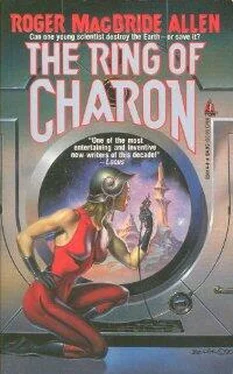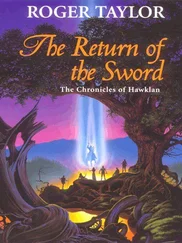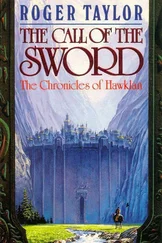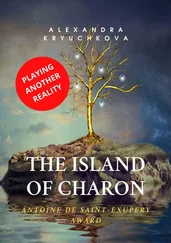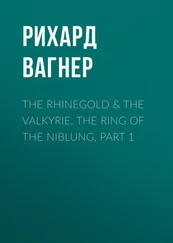Roger Allen - The Ring of Charon
Здесь есть возможность читать онлайн «Roger Allen - The Ring of Charon» весь текст электронной книги совершенно бесплатно (целиком полную версию без сокращений). В некоторых случаях можно слушать аудио, скачать через торрент в формате fb2 и присутствует краткое содержание. Год выпуска: 1990, ISBN: 1990, Издательство: Tor Books, Жанр: Фантастика и фэнтези, на английском языке. Описание произведения, (предисловие) а так же отзывы посетителей доступны на портале библиотеки ЛибКат.
- Название:The Ring of Charon
- Автор:
- Издательство:Tor Books
- Жанр:
- Год:1990
- ISBN:0-812-53014-4
- Рейтинг книги:5 / 5. Голосов: 1
-
Избранное:Добавить в избранное
- Отзывы:
-
Ваша оценка:
- 100
- 1
- 2
- 3
- 4
- 5
The Ring of Charon: краткое содержание, описание и аннотация
Предлагаем к чтению аннотацию, описание, краткое содержание или предисловие (зависит от того, что написал сам автор книги «The Ring of Charon»). Если вы не нашли необходимую информацию о книге — напишите в комментариях, мы постараемся отыскать её.
The Ring of Charon — читать онлайн бесплатно полную книгу (весь текст) целиком
Ниже представлен текст книги, разбитый по страницам. Система сохранения места последней прочитанной страницы, позволяет с удобством читать онлайн бесплатно книгу «The Ring of Charon», без необходимости каждый раз заново искать на чём Вы остановились. Поставьте закладку, и сможете в любой момент перейти на страницу, на которой закончили чтение.
Интервал:
Закладка:
“It’s very simple,” Marcia said. “How did we miss it? A von Neumann machine is any device that can exactly duplicate itself out of locally available raw materials. A toaster that could not only toast bread but build more toasters out of things found in the kitchen would be a von Neumann toaster. It’s a very old concept, named for the scientist who dreamed it up.
“But von Neumann’s real idea was to build a von Neumann starship,” Marcia said. “A robot explorer that could fly from one star system to another, explore the system—and then duplicate itself a few dozen times, maybe mining asteroids for materials. It would send out new von Neumanns, duplicates of itself, from there. Then each new exploration robot would travel on to a nearby star, duplicate itself , and start the cycle again. Each machine would report back to the home planet on what it found. Even given a fairly slow transit speed between stars, you could explore a huge volume of space in just a few hundred years. Traveling, exploring, reproducing, over and over again.”
“Wait a second,” Sondra protested. “The Charonians haven’t done any of those things. They’re not travelers, and they’re not explorers, and they aren’t reproducing—”
“Oh yes, they are,” Marcia said. “Remember, the labs found three different alien genetic codes in their genes? Maybe these Charonians haven’t gone anywhere, but that means they and their ancestors have been to at least three other star systems that had life. Finding them all would take a lot of traveling and exploring. And look how many of them there are—they’ve certainly done some reproducing!”
Sondra sat down at the comm console and thought about it. “Okay, okay. I can see that. But that’s not the whole story. There has to be something more. It doesn’t quite fit. Why is the Wheel hidden in the Moon? What were the Landers doing riding around in asteroids all this time? And how does stealing Earth and attacking the planets fit in? Wait a second. Old starship ideas. That reminds me of something else. Another old idea.”
She thought about it for a moment. At last she remembered. “Seedships. That’s it. It was a starship concept intended more for colonizing planets than for exploration. The logic was that a life-support system would be the biggest, heaviest part of a spacecraft—so you eliminate it. Instead, you freeze down a bunch of genetically perfect embryos, or fertilized eggs—or just sperm and ova. Maybe not just of the intelligent life-form, but the local equivalent of dogs and pigs and cats and chickens, or maybe Tyrannosaurus rex , if that suits your fancy. Any life-forms that might be handy at the other end. You pack them all up and launch them off.
“When the seedship finds a habitable planet, it lands, thaws out the embryos, and decants them. Then the ship—or its robots, or whatever—educates the kids as they grow. It raises the first generation of settlers. And if your designers were good enough, the ship could be programmed to do gene engineering, modify that first generation to survive better on whatever sort of world they end up on. Directed evolution.”
“But that doesn’t have anything to do with what’s happened here, either.” Marcia protested.
“No. But suppose you combined the ideas,” Sondra said. “Suppose you decided to build a von Neumann seedship . A seedship that knew how to do genetic tinkering, not only on gene codes from its homeworld, but smart enough to analyze other codes as well and use whatever was useful in them. Like Earth-style DNA. A machine that could duplicate itself, a machine programmed to duplicate itself and to send new seeds out among the stars, spreading out in all directions. A machine that was capable of modifying, improving itself, and modifying the life-forms it carried. Mining not asteroids, but living worlds, like Earth. Not just mining metal and fuel as raw materials, but life itself .”
Marcia nodded. “I can see that. But the present-day Charonians aren’t like that. Seedships like the ones you’ve described wouldn’t have a reason to hide in asteroids.”
“Maybe they do, and we don’t know what it is,” Sondra said. “Maybe they’ve just been in a dormant phase for a while and the gravity-wave beam woke them up.” But then she frowned and shook her head. “Wait a second. Their use of gravity waves and wormholes. We haven’t accounted for that.”
“So let’s go back a bit,” Marcia said. “Let’s talk about earlier stages in their development. Not the way the Charonians are now, but an intermediate stage between the way they were first made and the way they are now. Millions, tens or hundreds of millions of years ago.” She thought for a second. “Suppose, way back when, the Charonians were von Neumann seedships. Suppose a few things went wrong—at least from the viewpoint of the original designers. Suppose the ships just evolved off in an unexpected direction?”
Marcia put the message sheets down on the comm unit and walked back to sit on the couch she had been sleeping on. “The plan when the first ship was sent out was to spread life, and the duplication of the ships and so on was subordinate to spreading life. Then that point got lost, or changed. After all, it’s the machines doing all the work. Suppose the machines decided it was more important that they be duplicated—and then subordinated spreading life to spreading machines ?
“Suppose the ships started modifying their passengers , started breeding them so they were genetically driven to build more seedships?” Marcia asked. “They could hardwire building skills into the passengers, so that building new seedships becomes an instinct, a primal need. Maybe they start cutting and pasting DNA, or whatever they use instead of DNA. Take some T. rex genes, some dog and cow genes, combine them with the intelligent life-form’s genome. They land on a new world full of life and find some handy codings there. They cut and paste those in, too.”
“Wait a second,” Sondra protested. “No human would let a machine loose to modify human DNA.”
“ We wouldn’t. Humans wouldn’t do it, no. The very idea is repellant to us. But we’re not talking humans here. Suppose there were aliens with no taboos against such things? The idea disgusts me too, but imagine how fast things could change, how dramatically a species could evolve, if such things were permitted.
“They kept evolving,” Marcia went on. “The machines modifying themselves, the organic forms breeding themselves, machines tinkering with their own programming, and modifying the descendants of the organic Charonian passengers and their worker-animals. The seedships developed machines that worked with special-bred animals, and bred animals that needed mechanical implants, that couldn’t survive without them. Until the line between living and machine was completely blurred, until the Charonians didn’t even bother with the distinction anymore, until there was no clear line anymore between the Charonians, their machines, and their worker-animals. They all merged into one hugely complex entity. All the forms rely on each other to survive. Call it a multispecies.”
“Okay, good,” Sondra said. “But the ships were still the key. The seedships become the dominant form of the Charonians,” Sondra said. “They didn’t need organic-style intelligence to tell them what to do anymore. Somewhere along the line, the original Charonians lost out. That must be true, because they’re not there anymore. After all, it had to be living, sentient creatures who built the first ships.”
“It makes sense,” Marcia said. “I doubt we have it precisely right, but if we accept the idea that the Charonians of today started out as von Neumann seedships, built by creatures something like us, then they’ve certainly changed, mutated along the way to get to be what they are now. But that wasn’t the end of their development. We haven’t explained the Lunar Wheel, or the Multisystem. How do they fit in?”
Читать дальшеИнтервал:
Закладка:
Похожие книги на «The Ring of Charon»
Представляем Вашему вниманию похожие книги на «The Ring of Charon» списком для выбора. Мы отобрали схожую по названию и смыслу литературу в надежде предоставить читателям больше вариантов отыскать новые, интересные, ещё непрочитанные произведения.
Обсуждение, отзывы о книге «The Ring of Charon» и просто собственные мнения читателей. Оставьте ваши комментарии, напишите, что Вы думаете о произведении, его смысле или главных героях. Укажите что конкретно понравилось, а что нет, и почему Вы так считаете.
